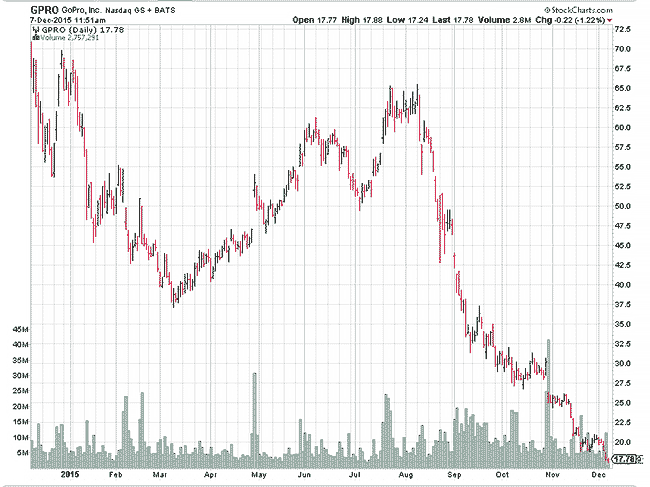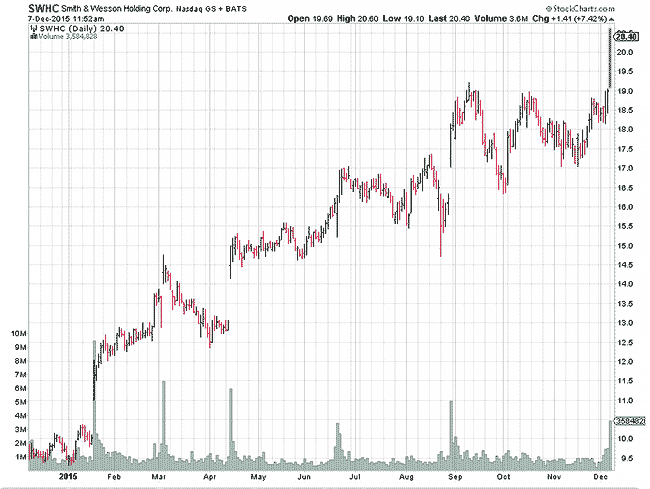I wrote an article at Trust Funds for Kids about using hedged vs. unhedged ETFs for investing. If you are interested it is below the fold. The impact of currencies on investing is very large and linked closely with interest rate and Central bank activities.
Markets and Trading
“Deja Vu: The Fed’s Real ‘Policy Error’ Was To Encourage Years of Speculation”
Nowadays, when I find myself feeling too good about things I read fund manager John Hussman’s weekly column and it brings me back to Earth. He may be off on the timing but it’s difficult to dispute his main argument that we’re in the late stages of a massive speculative bubble fueled by easy credit and other unwise govt policies.
There’s fraying at the edges in junk bonds and much nervous volatility in stocks, where successive sectors have inflated and then deflated since early 2015. Everyone knows we are due for a market debacle but no one knows when. It could happen in two days or two years. Meanwhile everyone stays invested because what else can you do with your money (answer: keep it in cash, but that’s hard to do until it’s too late) and maybe you can make some profits before the bottom falls out…
From his latest missive:
Over the past several years, yield-seeking investors, starved for any “pickup” in yield over Treasury securities, have piled into the junk debt and leveraged loan markets. Just as equity valuations have been driven to the second most extreme point in history (and the single most extreme point in history for the median stock, where valuations are well-beyond 2000 levels), risk premiums on speculative debt were compressed to razor-thin levels. By 2014, the spread between junk bond yields and Treasury yields had fallen to less than 2.4%. Since then, years of expected “risk-premiums” have been erased by capital losses, and defaults haven’t even spiked yet (they do so with a lag).
From an economic standpoint, the unfortunate fact is that the proceeds from aggressive issuance of junk debt and leveraged loans in the past few years were channeled into speculation. Excess capacity in energy production was expanded at the cyclical peak in oil prices, and heavy stock buybacks were executed at obscene equity valuations. The end result will be unintended wealth transfers and deadweight losses for the economy. Since the late-1990’s, the Federal Reserve has actively encouraged the channeling of trillions of dollars of savings into speculation. Recurring cycles of malinvestment and crisis have progressively weakened the resilience and long-term growth prospects of the U.S. economy.
[. . .]
Our outlook remains decidedly negative at present. I’ll emphasize again that market internals are the hinge that distinguishes a valuation bubble that expands from one that collapses, so an improvement in market internals would reduce the immediacy of our downside concerns, and would also tend to reduce our concerns about oncoming recession. In the absence of clear improvement in market internals – and last week was categorically opposite to that – I view the stock market as being in the late-phase of an extremely overvalued top formation that will likely be followed by profound losses over the completion of this market cycle, and the U.S. economy as being on the cusp of a new recession.
Interesting times ahead.
Quote of the Day
JPMorgan trimmed GoPro’s target to 45 from 55. On Friday, Robert W. Baird downgraded GoPro to neutral from outperform and slashed its price target to 18 from 36. Shares were hit last week, when chip supplier Ambarella (NASDAQ:AMBA) gave weak guidance due in part to soft action camera sales
(Source)
Thanks, guys!

Oh, BTW…

(Charts courtesy StockCharts.com.)
Risk: An Allegory
Here’s an interesting article on CNBC’s website: Katrina anniversary: Will New Orleans levees hold next time?
The 100-year threshold is also a statistical guess based on data on past storms and assessments of whether they’ll occur in the future. That means the models change every time a new hurricane strikes. The numbers being used as guidelines for construction are changing as time passes.
The standard also does not mean—can’t possibly mean—that a 100-year storm will occur only once per century. It means that such a storm has a 1 percent chance of happening in any given year. So for example, it’s technically possible for several 100-year floods to occur in just a few years, although it’s highly unlikely.
One way to look at it is that the engineers need to estimate how high a wall New Orleans needs to protect itself against a reasonably unlikely flood — say, a 1-in-1000-year event. This is the line of discussion pursued in the CNBC article.
Another way to look at it is to observe that the odds of another Katrina, or worse, within a specified period are highly uncertain. In this case a radical course of action might be called for. You do something like: take the best estimate for the wall height needed to protect against a 1000-year flood and then double it. Building such a levee would probably be extremely expensive but at least the costs would be out in the open. Or you might decide that it’s not the best idea to have a coastal city that’s below sea level, and so you would discourage people from moving back to New Orleans, rather than encourage them by subsidizing a new and stronger system of walls.
In this kind of situation the political incentives are usually going to encourage public decisionmakers to ignore radical solutions with high obvious costs, in favor of the minimum acceptable incremental solution with hidden costs: probably subsidies to rebuild the levees to, or perhaps a bit beyond, the standard needed to protect the city in the event of another Katrina. And it’s unlikely that any local pol is going to advise residents to move out and depopulate his constituency. Thus, eventually, a worst case will probably happen again.